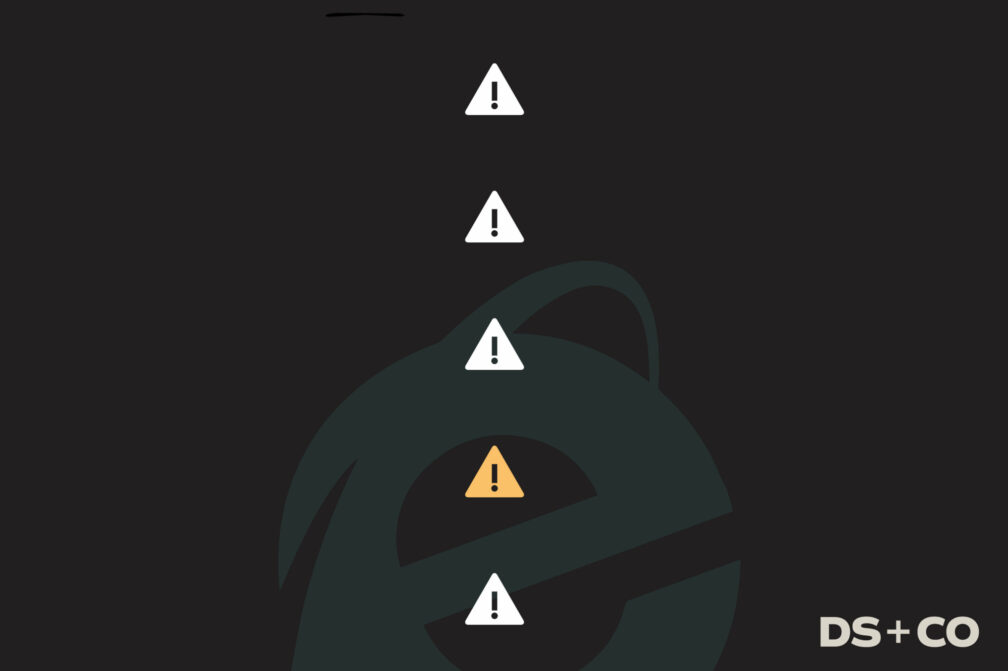Blog
Web Design + Development

IE End of Life: Goodbye Internet Explorer 11—Now What?
For many, it was the gateway to their first internet experience, but after a storied run, Internet Explorer is coming to an end. On August 17, 2021, Microsoft will stop supporting IE11, the latest rendition of the groundbreaking web browser, and instead push everyone to its upgraded model, Microsoft Edge. And while many have moved to different browsers in the past decade, the end of IE leaves many wondering—what’s next?
What We Know
Despite its place in web-lore, Internet Explorer has issues. Mainly, the gap between modern browser features and those supported by legacy browsers makes supporting IE more expensive or not even feasible in web development projects. Not great. In 2015, supporting IE could be as easy as adjusting some styling code, but in 2020, having IE-specific code often causes bugs, increasing the hours spent testing and ultimately blowing budgets for many web projects.
But that’s just the start of IE’s issues. Other common problems include:
- Third-party integrations that won’t work with IE
- Increased prices of ongoing maintenance for IE-specific issues
- Heavy pages with longer load times
- Unoptimized web experiences
- Website creator tools that are dropping IE support (like Vue.js, Vite and content management systems)
- Unsupported layout features forcing worse website accessibility and visually unappealing pages
What You Can Do
While all of this may seem bleak, there’s reason for optimism if you prepare yourself for IE’s August sunsetting. Here are three things you can do right now to keep your users happy.
1. Drop IE support immediately: If less than 3% of your web audience uses Internet Explorer, dropping IE support is one of the best things you can do for the other 97%. They’ll feel like your site got faster overnight.
2. Make a plan: If more than 5% of your audience runs IE, make a plan to remove IE and communicate to your customers the date you plan to stop supporting the browser. You can even show a message that only appears for a person who is viewing your website in IE.
3. Upgrade your tools: – Swap your programs and plugins that support IE for ones that use safer, modern browsers. If IE support is required for IE-specific software, look into Microsoft Edge’s IE mode.
Final Thoughts
Back in the day, we advised clients to look at the analytics around their audience’s browser use to determine whether we should include support for IE11. Have a lot of Internet Explorers traversing your page? Keep IE. Not so much? Get rid of it.
But now, with the news from Microsoft about the summer drop date, the general consensus among web developers and tool makers is to end support for IE11 no later than August 2021 and honestly, we’d recommend far sooner.
The quicker you jump into a plan of action to say RIP to IE, the better the experience will be for your users, your clients and your business. Welcome to the new world wide web.
To learn more from the experts, contact our team, or check out our web development page.
Will Browar
Will Browar is a web development supervisor who keeps DS+CO on top of emerging trends, user experience and what’s next for tomorrow’s digital space.